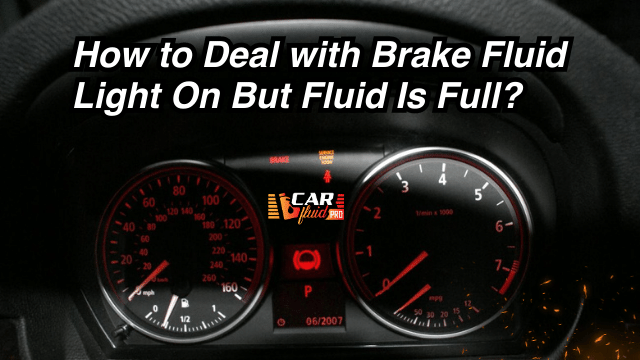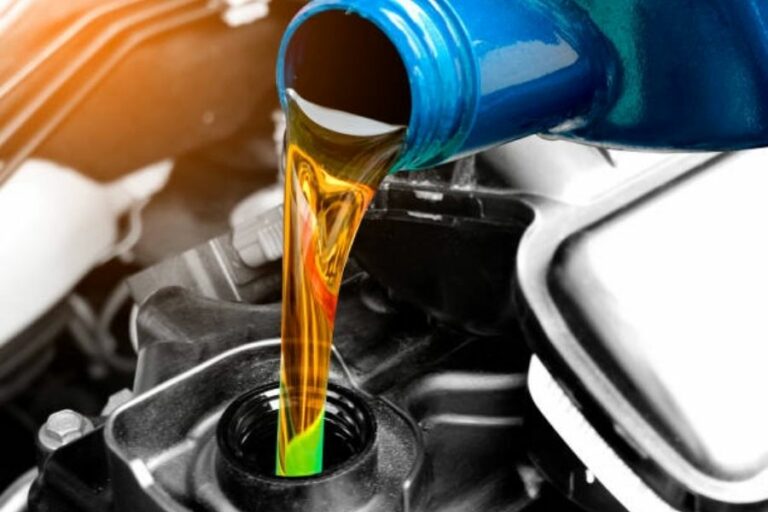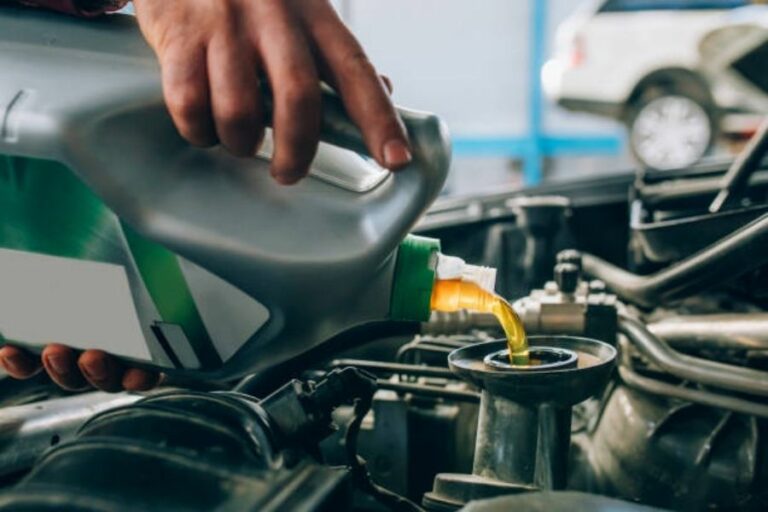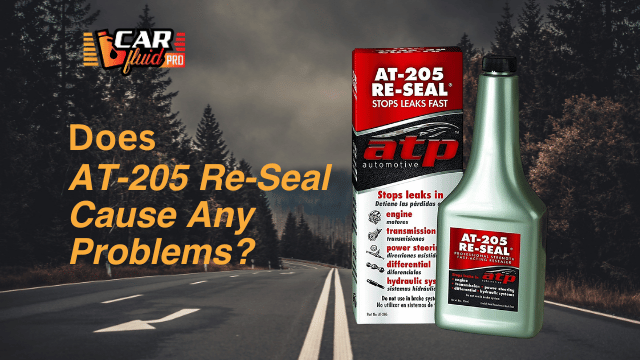Why Oil Pressure Gauge is Not Working? (Causes & Solutions)
An oil pressure gauge, be it digital or manual gives you continuous updates on the engine oil level. That’s why it’s alarming when you find out that your oil pressure gauge is not working right.
In case you are wondering what went wrong with the gauge, here’s a detailed guide on this matter. So, stick with us till the end.
Why is Your Vehicle’s Oil Pressure Gauge Not Working?
An oil pressure gauge is mostly used to keep an eye on the oil level. When the pressure lowers, the drivers assume the engine needs more oil. But, you start to suspect the gauge’s effectiveness when the oil level seems perfectly fine even after the gauge read something else.
We have found some shocking reasons behind such errors. Have a look.
- The low viscosity of oil
- Blocked oil filter
- Inefficient pump
- Damaged/corroded wiring
- Oil leakage
Yes, it’s not always a faulty gauge. Factors like bad oil or a broken pump can mess up the pressure gauge.
How to Diagnose and Fix A False Oil Pressure Gauge Reading?
The only job of an oil pressure gauge is to warn you when the lubrication system (mostly the oil pump) is not working efficiently. However, if you don’t find any disturbance within the engine, you can assume the oil pressure gauge gave a false report.
Let’s visualize it with a common example. Suppose the needle displays a dangerously low pressure. At this point, the engine would show certain symptoms like high and unusual temperature, black smoke coming out of the exhaust, noise, and so on.
If there are no symptoms like that, the oil pressure gauge is not working properly. On another note, if you want to be sure, check the oil level in your engine. If it’s at an optimum level despite the warning signs from the gauge, that’s a red signal.
Once your diagnosis is over, let’s move on and try to fix the issue from its root.
Is The Oil Inappropriate?- Change It
Manufacturers strictly instruct you to use a certain grade and type of engine oil. Whether it’s conventional, synthetic, or blend oil, you should stick with the manual.
Oil pumps can’t perform efficiently if the oil viscosity or greater or lower than ideal. If you see that the oil level is right and so is the pressure gauge. It’s time to reevaluate the oil you use.
Are The Rubber Gaskets Leaking?- Tighten It
When the oil level stays low even though you just filled the oil pan, it might be a leakage problem. It happens when the rubber gaskets get damaged or loosen up.
Since the oil finds its way outside the pipes, the oil level, hence the pressure gets lower than normal. We might mistake it to be a pressure gauge fault when it isn’t.
The solution is simple. If the leakage is extreme, go find a professional mechanic. However, if it’s only a loose gasket issue, you can fix it yourself. Get the pressure sensor out and wrap it with Teflon tape. Just go two to three layers and you are done. This extra precaution will help to prevent minor leakage issues.
Does The Pressure Switch Have Corroded/Damaged Wiring?- Replace It
Yes, the inner part of the sensor is always sampling engine oil to measure the pressure. Hence, it stays covered in a thick liquid. What we must know is that such an environment can easily damage important wires or harnesses.
Once you are sure that, the oil type and level are absolutely perfect, remove the pressure gauge. You can choose to replace it with a new one. It takes only $10 or less. However, if you are adamant about using it, let a mechanic inspect it for you.
Read Also: What Causes High Oil Pressure After Oil Change?
Replacing A Bad Oil Pressure Gauge: A Step-by-Step Guide
If nothing works out, replacing the old pressure gauge with a new one is your only bet. Here’s a step-by-step guide to doing that by yourself.
Step 1: Collect The Tools
Start by gathering the tools beside you. Don’t forget a stool if the pressure-sending unit is in a hard-to-reach place within your vehicle.
Moreover, you will need a new pressure gauge (of course), a pressure sensor, nylon pipes, some fittings, a socket, a wrench, and Teflon tapes.
Step 2: Let The Engine Cool Down
You don’t want hot oil landing on your hand as you tighten the pressure sensor. That would be horrible. Please ensure the car has been parked for a while before proceeding.
Step 3: Locate The Pressure Sending Unit
Next, look for the pressure switch. The location varies depending on the model. For the most part, it should be beside the oil filter. If you can’t figure it out by yourself, please get a repair manual for your specific vehicle.
Step 4: Insert The Pipe Into The Oil Port
Move back and grab the nylon pipe. It should already have a compression sleeve and nut on one end. Get the appropriate fitting and thread it into the block. Hand-tighten it as much as you can.
Make sure you have removed the old factory pressure-ending unit. Insert the wider end of this thread into the oil port. To seal it better, you could use tapes or any other solution.
Step 5: Run The Pipe Through The Firewall
Use a wrench to tighten up the thread. But don’t end up crimping the nylon pipe in that process. Keep a balance.
Once it is tightly snugged, grab the pipe and run it through the firewall of your vehicle. Now, go inside your car. You should see the pipe beside the pedals.
Step 6: Set The Pressure Gauge
Next, prepare the other end of the nylon pipe for the new pressure gauge. Put a compression sleeve, a nut, and finally, a thread. Follow the same process and connect the wider end to the pressure gauge.
Step 7: Run A Test
It always pays to double-check. Once the gauge is set up, turn the engine on. See, whether the needle display still stays on “zero” or goes up. If it stays anywhere between 25 to 65 PSI, you have nothing to worry about anymore.
Read Also: How To Unstick Oil Pressure Relief Valve? [5 Easy Steps]
Preventative Maintenance for the Oil Pressure Gauge
Prevention is always better and easier than the final repair. And, it’s truer for engine parts. Check out the maintenance routine to help you minimize the occurrence of such incidents again in the future.
Use High-Quality Engine Oil
Not every vehicle thrives on a single oil. There are hundreds of lubricant brands in the market if not more. If the oil viscosity isn’t ideal for your vehicle, the oil pump has trouble properly pushing it through the engine.
For example, 5W indicates low viscosity of the fluid during winter. While there is some oil with 15W. Every oil is designed for a special purpose. It’s not wise to just pick anything.
Prolonged practice of such habit can ultimately damage the oil pump altogether leading to misreadings from the pressure gauge.
Regularly Inspect The Oil-Level
Always carry a dipstick in your car’s storage compartment. Check the oil level after a certain gap. Let the car sit idly for a while before opening the cap.
That way, oil travels back to the oil pan and doesn’t leak. Insert the dipstick into the oil compartment and see how much length is covered with black liquid. If the level is at par with the pressure gauge reading, nothing’s to be worried about.
However, if the two outcomes don’t match, take immediate action. The sooner you fix it, the less damage your engine will face.
Read Also: Why Does 5.7 Hemi Oil Pressure Drop at Idle? (Causes & Fix)
FAQs.
For more oil pressure gauge related queries, have a sneak peak inside our FAQ section.
What Does Zero Mean On An Oil Pressure Gauge?
Zero is the lowest reading you can get from an oil pressure gauge. It mostly indicates your car’s engine is at rest or not working. If you see this reading while driving the car, the gauge has to be at fault.
Can I Still Drive With A Faulty Oil Pressure Gauge?
You would have no problem driving the car even with a damaged oil pressure gauge. But it’s dangerous to continue this practice for a long time. Because driving with a low level of oil is extremely dangerous for your engine’s health. And, without a sound pressure gauge, there’s no way to identify it.
Can Oil Pressure Sensor Give False Reading?
Yes, it’s possible to have a faulty pressure sensor. Your engine oil level might be normal but the sensor would still detect low pressure and warn you with the lights. That’s how you identify a bad sensor.
What Controls the Oil Pressure Gauge?
It’s the pressure-sending unit located just near the oil port. This particular part collects samples from the running oil and detects the pressure. The reading then reaches the gauge and you can see the needle moving.
Final Words
Sadly, there’s not much you can do to avoid this issue. The only thing in your hand is to maintain the right kind of oil. Sometimes when a low-pressure warning goes off, verify it with a dipstick before filling the tank again. Hopefully, you won’t be as confused whenever the pressure gaugae stops working again.
Read Also: Why is Pressure Coming Out Of the Oil Filler Cap? (Explained)






